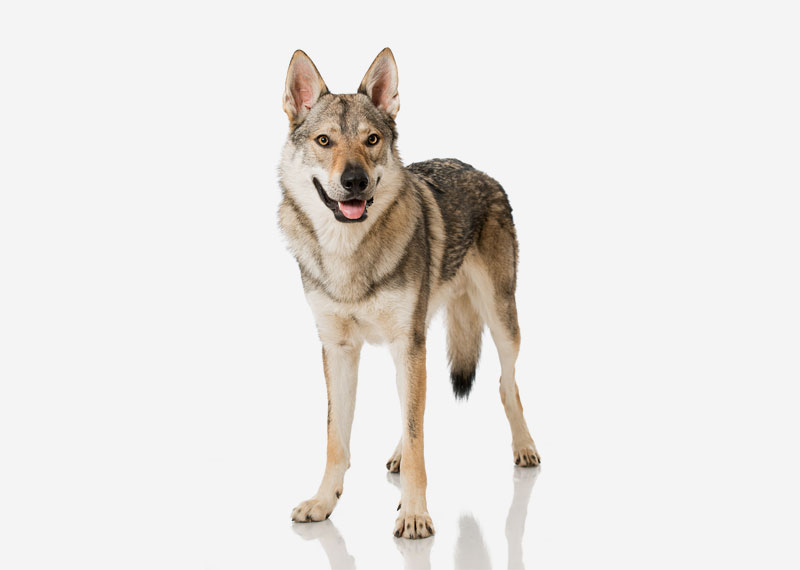The Czechoslovakian Wolfdog, (sk. Československý vlčiak, cz. Československý vlčák) is a relatively new dog breed that traces its original lineage to an experiment conducted in 1955 in Czechoslovakia. After initially breeding working line German Shepherd Dogs with Carpathian wolves (Canis lupus lupus), a plan was worked out to create a breed that would have the temperament, pack mentality, and trainability of the German Shepherd Dog and the strength, physical build, and stamina of the Carpathian wolf.
The breed was engineered as attack dogs for use in military Special Operations done by the Czechoslovak Special Forces commandos but were later also used in search and rescue, schutzhund, tracking, herding, agility, obedience, hunting, and drafting in Europe and the United States. It was officially recognized as a national breed in Czechoslovakia in 1982. In 1989 it became FCI standard no. 332, group 1, section 1.
History
In 1955, when Ing. Karel Hartl began to consider crossing Carpathian wolf with a German Shepherd. Initially, the crossing was conducted as a scientific experiment. A few years later, however, the idea was born to cultivate a new breed. The first hybrids of a female wolf Brita and male German Shepherd Cézar was born on 26 May 1958, in Libějovice.
Puppies of the first generation in appearance and behavior resembled wolf. Their upbringing was difficult, the training was possible, but the results hardly match the effort. In adulthood was again associated with German Shepherds, so in the fourth final generation decreased the proportion of "wolf blood" up to 6.25%. Most individuals of the third and fourth generation was able to attend a normal course and could be placed in a service performance. Compared to dogs had better navigational skills, night vision, hearing and sense of smell. In tests of endurance, hybrids finished the entire 100 km route without being exhausted.
The lecture of Ing. Karel Hartl "Results of crossing wolves with dogs" brought major attention at the World Dog Show held in June 1965 in Brno and in Prague at the annual meeting of the Fédération Cynologique Internationale (FCI) and the International Cynologic Congress. In the following year Ing. Hartl compiled a draft of a standard of a new dog breed. The wolf Brita then gave the basis of the second line after the merger with the German Shepherd Kurt. The third line was made by joining the wolf Arga with female dog Asta from the SNB. In 1977, the individual of the 3rd generation named Xela of border guards, was covered by wolf Sarika, he then also mated female Urta of border guards. Last addition of wolf blood took place in 1983. The wolf Lejdy of ZOO Hluboká nad Vltavou gave birth to last line of a new breed, the father of the puppies became a German Shepherd Bojar von Shottenhof. Furthermore, breeding has been carried out only in closed populations and the hybrids began to be referred to as Czechoslovakian wolfdogs.
In 1982 it was recognized by the Czechoslovakian breeders associations as a national breed. It was officially recognized as a breed by FCI in 1989. It won the title of "World champion" at World Dog Show in Brno in 1990. Ten years after the recognition of the standard, the breed had to again confirm that the breed is further viable and met all the criteria. The recognition of the Czechoslovakian wolfdog breed has been definitively confirmed.
As of January 2014, most puppies a year are registered in Italy (up to two hundred), in the Czech Republic it's about a hundred and in Slovakia it's about fifty.






